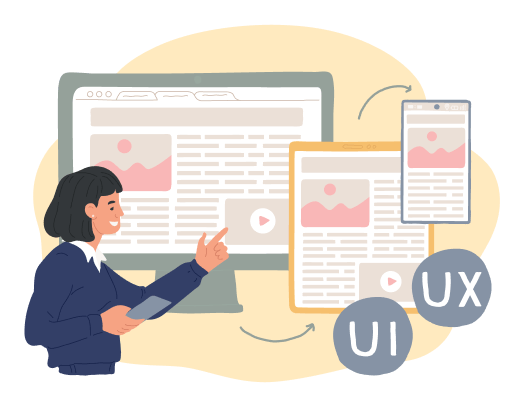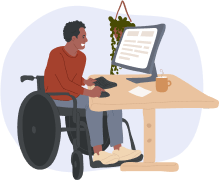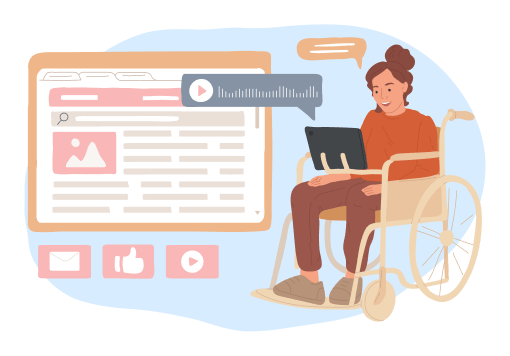Physical Disabilities and Web Accessibility
Accessible websites include physically disabled individuals in the online community by giving them full and equal access to information. Content must be optimized to meet their needs regardless of the limitations they may face, meaning it must be accurately interpreted and easy to navigate. WebAccessible.Biz audits web pages and identifies areas for improvement where we can remove barriers for people with disabilities. We do this by following ADA laws and subsequent WCAG guidelines that act as a barometer for a website’s level of compliance. Design your digital platform with inclusivity in mind so that everyone can benefit from an improved online experience.

How Do Physical Impairments Affect Your Online Experience?
Physical impairments can cause restrictions for people when they interact with various multimedia elements on a website. These hurdles can make it difficult to navigate web pages, interpret images, easily read text, and use buttons or forms. In a world where technology has brought ease and convenience to so many people’s lives, we should remember not to shut anyone out of the equation. One in four people in the United States has a disability that could impede their ability to independently use the internet to handle their everyday tasks. Whether someone has an auditory, visual, or other physical disability, an accessible website plays an important role in making the online realm a more inclusive place for everyone.
Failing to make accessible online platforms a priority means alienating individuals with physical mobility disabilities. Every business that serves the public should care about optimizing their website to meet the needs of their customers regardless of ability. ADA compliant websites impact your customers’ online experience and influence the trust they have with your brand. Deliver higher satisfaction with a robust website that your audience can perceive, operate, and understand with ease.
Offer Inclusivity for All Physical Mobility Disabilities
No matter the physical mobility disability an individual may have, they should still have access to the same information as your other website visitors. An inclusive online space will accommodate their unique needs with certain design elements and technologies that aid their user experience.



Some common disabilities the ADA web compliance law was meant to address are:
- Arthritis
- Fibromyalgia
- Muscular dystrophy
- Repetitive stress injury
- Cerebral palsy
- Tremor and spasm
- Cystic fibrosis
- Multiple sclerosis
- Photosensitive epilepsy
- Low vision or blindness
- Hearing impairment
People with difficulty hearing, seeing, or using certain hardware will need additional support to navigate your web pages. Even individuals with temporary impairments can benefit from an accessible website that allows them to interact with digital content. If someone sustains a short-term injury or illness that impedes their physical abilities, they may also need assistance navigating through web pages or reading text.
Assistive Device Compatibility for Physical Disabilities
Accommodations are available for those with physical impairments through advanced technology that allows them to engage with text, video, images, and other multimedia elements. Magnifiers, voice recognition software, and closed captions are examples of assistive technologies that have been developed to fill this gap in web access. Optimizing your website to meet the needs of your whole audience includes making key updates that make it easier to see and interpret information.
There are also some design features that help with this goal such as hierarchical site structure, alt tags, font, and background color contrast.
One of the most helpful ways to make your website accessible is to make it compatible with adaptive keyboards. They allow individuals with physical disabilities to better navigate your web pages using braille or use certain commands when they can’t use a mouse. This, combined with other technology like screen readers which use text-to-speech capabilities can go hand in hand to deliver a better user experience.

Give People With Physical Impairments Equal Access
WebAccessible.Biz keeps businesses in adherence with relevant laws and regulations, but most importantly, it removes the restrictions people with physical impairments often face in the online sphere. Ensuring that your website is upgraded means creating a welcoming and functional space where you can meet the needs of your entire audience, including those with temporary and long-term mobility disabilities. Scan your site for ADA compliance and evaluate your assistive device compatibility with help from professionals who can make the necessary improvements.
